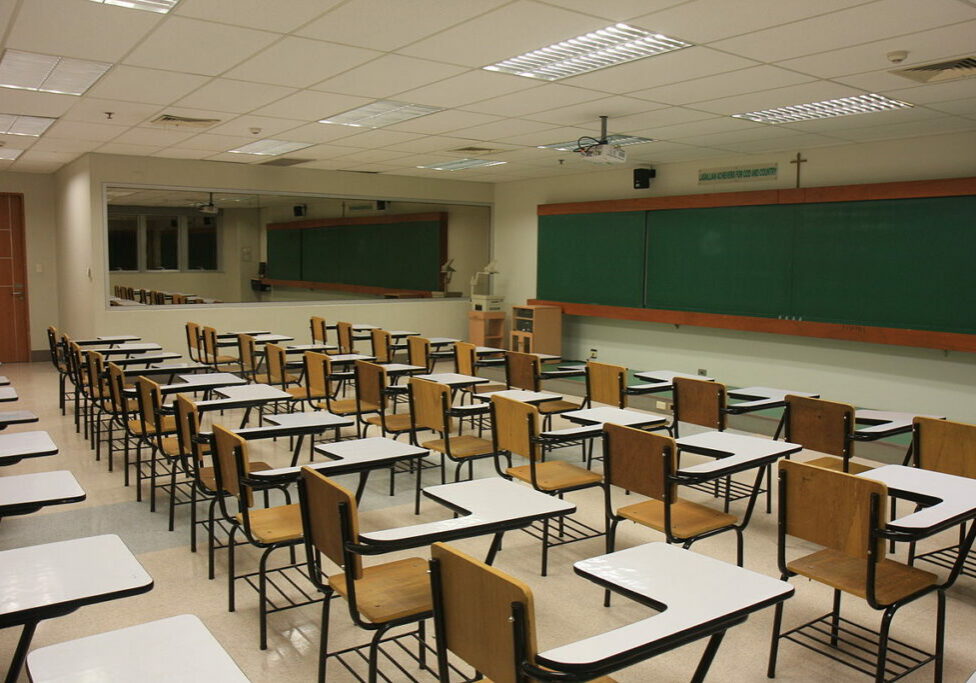Classroom teachers and paraprofessionals may be exposed to a whole catalog of health and safety hazards from asbestos to poor ventilation. They need to be aware of best practice solutions, because knowing how a problem can be solved is a powerful incentive to insist the district take action and spend the money to fix it. Effective local association health and safety committees are critical to that work.
Every local should consult with its UniServ field representative to organize and energize its health and safety committee. When a committee is effective, the work is shared and no one can be singled out for retaliation when pressure is put on the district. A key committee goal is to make sure the district responds quickly and fairly to staff member concerns, complaints, incidents, injuries and illnesses. Obtaining health and safety training for staff is also crucial.
This overview of hazards and solutions gives a concrete picture of what helps make a classroom safe and healthy. More details on every hazard and solution can be found in NJEA publications.
Classroom hazards and solutions
Too hot or too cold
• Keep temperatures between 73 to 79 F in summer; 68 to 75 F in winter.
• Teacher/paraprofessional control of windows and thermostat.
• Central air conditioning (AC); window, wall and portable AC units.
• Window, floor and ceiling fans (at least eight feet off the ground).
• Window shades, blinds and solar film.
• No seating in direct sunlight.
Poor ventilation
• Ventilation turned on; air flowing well without drafts.
• Interior and exterior air vents open, clean and clear of obstructions.
• Adequate staffing, training and procedures for those that operate and maintain heating, air conditioning and ventilation systems (HVAC).
Mold and moisture
• Permanently fix water leaks from roofs, windows, walls, foundations and plumbing.
• Direct rain and sprinkler water away from foundation.
• Keep humidity below 60 percent with AC or dehumidifiers.
• Wipe condensation from windows and sills.
• Dry out damp/wet materials within 48 hours; discard moldy materials.
• Scrub mold off hard surfaces with detergent and water.
Dust, dirt and germs
• Place large floor mats inside every building entrance. Vacuum mats daily.
• Clean daily with methods that don’t raise dust: use wet wiping and mopping, microfiber dusting and vacuums with high-efficiency bags and exhaust filters.
• Assign one full-time custodian per 15,000 square feet of building.
Construction/renovation dust, vapors, noise
• Schedule projects such as roofing when buildings are unoccupied.
• Isolate project areas from occupied areas with plastic sheeting and negative pressure.
• Inspect, clean and ventilate classrooms before reoccupancy.
Pests and pesticides
• Written Integrated Pest Management (IPM) Policy in place and practiced.
• No routine use of pesticides; least-toxic pesticides only when other methods fail.
• Pest-proof buildings by filling all gaps with foam, steel wool, etc.
• Pest-proof food storage and waste disposal; leave no food scraps overnight.
• Eliminate clutter. Store in plastic totes, not cardboard boxes.
Toxic materials
• Check product labels and Safety Data Sheets for ingredients; N.J. Hazardous Substance Fact Sheets for health effects and precautions.
• Repair damaged asbestos and flaking/peeling paint.
• Use least-toxic, low-odor and water-based cleaning products, markers, art supplies and paint.
• Replace fluorescent light ballasts that contain PCBs.
• Ban idling and route traffic to keep vehicle exhaust away from building air intakes.
Poor lighting
• Maximize daylight.
• Adjust light levels: bright for reading; dim for screens.
• Use eggcrate diffusers to eliminate glare.
• Replace flickering bulbs.
Noise
• Use acoustic ceiling tiles with high noise reduction/sound absorption.
• Service noisy HVAC systems.
• Place rubber tips or tennis balls on the legs of tables and chairs.
• Seat students in small groups to reduce their need to speak loudly.
Violence
• Enforce good building security and emergency communications.
• Standardize student and visitor control procedures, identification and passes.
• Ban working alone before or after hours without security.
• Give training in using positive incentives, de-escalating conflict, handling angry people and working effectively with a diverse student body.
• During incidents, call for assistance; disperse any audience; exercise self-protection and push aside anything that may be tripped over or used as a weapon.
• Provide timely social services and counseling for victims, bystanders and offenders.
• Report all incidents in writing to administration; and ensure that the state’s Violence, Vandalism, and Substance Abuse Incident Report Form is completed; copy health and safety committee on all reports
Biohazards
• Encouage frequent hand washing and cleaning of common surfaces.
• Have sick staff and students stay home.
• Locate fish tanks, animal cages and plants away from air vents.
• Take universal precautions; treat all bodily fluids as contaminated; use gloves, masks and eye protection.
• Maintain training, equipment and Hepatitis B vaccinations for those expected to clean up bodily fluids.
• Provide post-exposure medical follow-up.
Safety
• Repair loose or uneven flooring.
• Securely fasten shelving, boards.
• Provide training in proper lifting technique and back exercises.
• Provide mechanical lifting devices; carts for books; break heavy loads into smaller loads.
• Store materials above floor level and below shoulder level.
Adrienne Markowitz holds a Master of Science in Industrial Hygiene from Hunter College, City University of New York. Eileen Senn holds a Master of Science in Occupational Health from Temple University in Philadelphia. They are consultants with the New Jersey Work Environment Council, which is a frequent partner with NJEA on school health and safety concerns.
